Guide to the selection and purchase of farmed seafood, how to buy high-quality farmed shrimp and Basha fish?
Science Popularization Lecture Hall (part two)
What is the difference between white shrimps from different places?
Do you know all the three largest farmed prawns in the world?
Are Basha fillet and tilapia fillet a kind of fish fillet?
What do MSC certification and BAP certification mean?
Australian beef, why is it so popular with consumers?
1. White shrimp from different habitats
What's the difference?

Do not underestimate the white shrimp you eat that turn a blind eye, for the quality of a white shrimp, from the seedlings, feed, water, management, there can be no mistakes.
A: Ecuador Penaeus vannamei
Key words: water is good, shrimp is good.
Ecuador is the representative of high-quality waters. The environment there, whether it is water quality or air, is of very high quality.
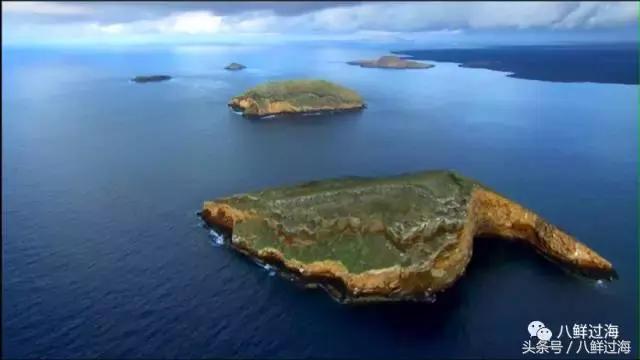
Ecuador's surrounding environment
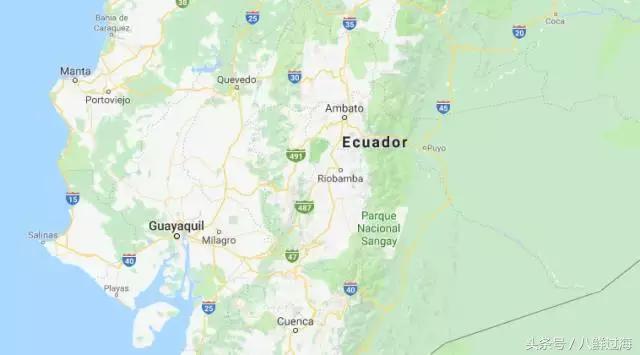
Ecuador is located in northwestern South America
Penaeus vannamei is native to the warm waters of the eastern Pacific Ocean, from Sonora, Mexico to northern Peru. Wild South American white shrimp are concentrated in the coastal waters of Central America, among which the coastal density of Ecuador is higher! Ecuador is not only an equatorial country, but also has the presence of wild shrimp, which is the most direct and powerful indication of good water quality and suitable for the culture of Penaeus vannamei.
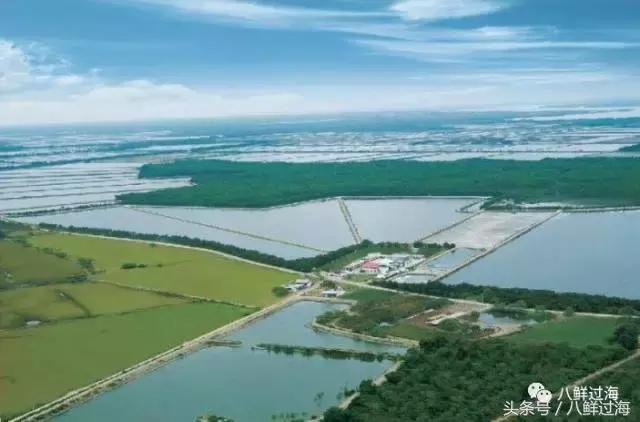
An aerial view of the waters of South American white shrimp culture in Ecuador
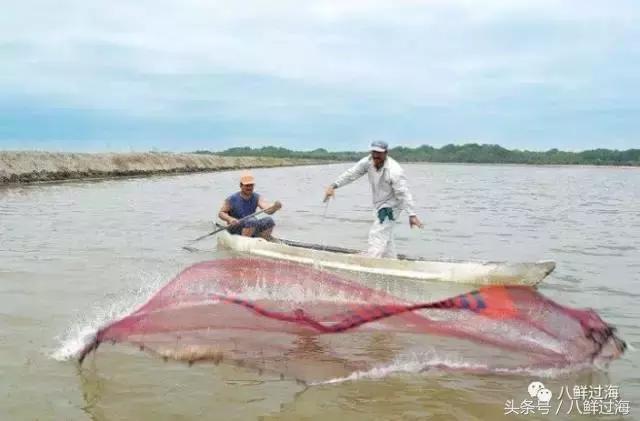
The breeders are casting nets to harvest South American white shrimp.
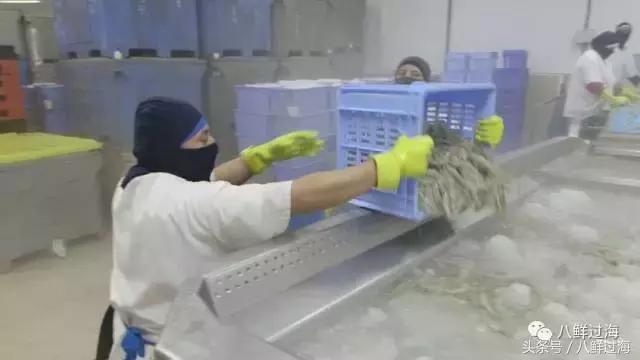
Workers are cleaning the farmed South American white shrimp.
Emperor fresh suppliers went deep into Ecuador's origin to inspect the local white shrimp processing plant.
The workers are boxing and weighing the white shrimp.
After the processed white shrimp is frozen, it is packed into storage and waiting for export.
B: Thailand South American White Shrimp
Key words: high level of management
South American white shrimp farmers in Thailand attach great importance to the prevention of shrimp disease.
A. The environmental assessment of the pool site will be carried out regularly, ✓
B. Thoroughly desilting and disinfecting ✓ in shrimp ponds
C. Strict water quality management, generally equipped with aerator ✓
D. Feeding high quality compound feed ✓
E. Strict treatment of ✓ in infected shrimp ponds
F. And in accordance with the American SPF breeding method ✓
Aquaculture waters in Thailand
The experimenter checks the water quality regularly.
C: Zhanjiang Penaeus vannamei
Key words: feed is good, everything tastes good
Zhanjiang is the capital of Chinese prawns! Shrimp feed is developing in the direction of collectivization, and the competition is fierce, so that the quality and safety are guaranteed to a certain extent, and the feed product technology is in the leading level in the world.
Guangdong Zhanjiang aquaculture waters
The feeding of Penaeus vannamei decreased and grew slowly when the water temperature was below 18 ℃, but it was not conducive to the growth of culture when the feeding stopped when the water temperature was below 15 ℃. Penaeus vannamei is the backbone species of shrimp aquaculture in China, accounting for 73% of the total shrimp in China. The development of intensive farming. One out of every seven shrimp in the world is from Zhanjiang.
2. White shrimp, blue shrimp, black tiger shrimp
Is it just a different color?
Of course not! South American white shrimp and black tiger shrimp are famous cultured prawns in the world, while Mexican blue shrimp is also a new breeding species in recent years.
A: Penaeus vannamei
Penaeus vannamei (mentioned above) is Penaeus vannamei. South American white shrimp (Penaeus Vanmamei), Latin name Penaeus vannamei Boone, also known as white-footed shrimp (Whiteleg Shrimp) belongs to the phylum Arthropoda, Decapoda, Penaeidae, genus Penaeus. Penaeus vannamei is divided into head, chest and abdomen two parts, the shrimp body is transparent, chitin (chitin) carapace forms the exoskeleton, light cyan, no obvious markings. The big tentacles are bluish gray, the heart is dark black, and the feet are often dark white, so they are called white-footed shrimp. The cephalothorax is short, with a ratio of about 1:3 to the abdomen. The body is long and laterally flat, slightly fusiform, and 23cm is the largest length. Belongs to the wide salt, wide temperature shrimp.
According to the study, 18 kinds of amino acids in Penaeus vannamei are in line with the ideal model of FAO/WHO. Penaeus vannamei is rich in polyunsaturated fatty acids (PUFA), accounting for 41.65% of the total fatty acids. It is rich in VA, VD, VE, VB2 and VB6, as well as Ca, Fe, Zn and Se in mineral elements. Penaeus vannamei has good nutrition and health care value.
Fried noodles with white shrimp in South America
B: Brunei blue shrimp
It turns out that our ancestors were "Mexican Blue Shrimp".
Brunei blue shrimp, scientific name Mexican blue shrimp, Latin name: Penaeus vannamei Boone, its wild original species is native to the Panamanian waters. After long-term domestication and screening by the Hawaii Institute of Oceanography and Brunei National Laboratory, the Mexican blue shrimp suitable for artificial culture was selected. Because Brunei is located in the equatorial windless zone, the weather is good all year round, and the sea area is not polluted by industry and agriculture, so it is very suitable for the cultivation of Mexican blue shrimp. In 1999, Brunei began to cultivate blue shrimp on a large scale. At present, Brunei has become one of the major countries in the world to cultivate blue shrimp.
Brunei Blue Shrimp Culture Base
Brunei has a very high demand for blue shrimp farming. Blue shrimp live in culture ponds 1.5 meters deep (mostly 3 meters deep in China, high-density culture), with an average of only 10 shrimp per square meter of water. It has a spacious and pollution-free living environment.
The workers are fishing for blue shrimp in the water.
What is really attractive for blue shrimp to try is its outstanding ID card. Because, it is the first aquatic product in the world that has passed the double certification of ISO22000 and HACCP fresh shrimp management safety. (there should be applause here)
Emperor fresh supplier inspects Blue Shrimp Farm in Brunei
Enterprises owned by the Brunei government have cultivated blue shrimp for more than a decade, not only without any record of virus outbreaks, but also become the royal shrimp products of the oil-rich and fastidious Brunei royal family.
A corner of the magnificent royal palace of Brunei
Classified into the box
Brunei blue shrimp is a green and organic certified food, free of antibiotics, antistaling agents and heavy metal pollution, and rich in nutrition. In addition to being rich in zinc, magnesium, calcium and phosphorus, every 100g shrimp contains 20.22g protein, while fat is only 0.22g, and the total amino acid content is as high as 17.47g. (at this point, Sister Baxian can't help but try to place an order.)
Brunei Blue Shrimp in the Emperor fresh Series
Cooked blue shrimp with purple sauce
C: Malaysian black tiger shrimp
Big, good-looking, wild species.
Black tiger shrimp, that is, grass shrimp (Penaeus monodon) or Penaeus Monodon, commonly known as black tiger shrimp, cow sea shrimp (cow sea shrimp), English name Giant tiger prawn. It's the genus Penaeus. Distributed in the Indian Ocean and Pacific Ocean, east to the Sea of Japan, west to the west coast of Africa and Arabian Peninsula, south to Australia.
Malaysia black tiger shrimp has certain wild fishing products. Because wild black tiger shrimp is in short supply in many countries, artificial culture of black tiger shrimp is also carried out in Malaysia. The superior local aquaculture waters ensure the quality of black tiger shrimp for export and are recognized by the importing countries.
Cleaning treatment of black tiger shrimp
Black tiger shrimp with regular classification
Arrived at the market, the popular black tiger shrimp
Black tiger shrimp, named for its large size and markings, has a glossy brown body, an iron rust texture on the back and an elegant posture. To be beautiful and expensive, known as the "king of shrimp", is a valuable shrimp welcomed by consumers. At present, it is the most common breed in the world, and it is a variety with a high content of astaxanthin, which is about 20% higher than that of ordinary shrimp.
As the king of astaxanthin, the ability of antioxidation is also the first! If you are a white-collar worker who often stays up late, if you have children who are growing up and need nourishment, if there are elderly parents at home. Then astaxanthin is definitely your good helper! Because it is rich in protein, calcium, vitamin E, vitamin B2, magnesium, unsaturated acid and other nutrients, the meat is delicious and soft, easy to digest, and it is an excellent food for people who are weak and need to be recuperated after illness.
Such a big black tiger shrimp is really the king of shrimp.
3. Basha and tilapia fillet
What's the difference?
A: Vietnamese Basha fish
Raise a fish between the mountains and rivers
Basha fish, belonging to the family Siluriformes (Pangasiidae), Pangasius haniltoa catfish (Haniltoa), is a freshwater farmed species with excellent economic characters in the Mekong River. The fish is spindle-shaped, scaleless and suboral, and there are three large pieces of yellowish oily fat in the abdominal cavity of adult fish. The culture of Basha fish should often change a lot of water, and the culture temperature should not be lower than 13 ℃.
The larvae of Pasha are protected by the Vietnamese government, and it is difficult for other countries to obtain them, so it is not possible to develop fish farming on a large scale. As a result, Vietnam has become the world's leading country in breeding barabasa fish.
Basha fish has obvious advantages in meat yield, yield per mu and international price of fish fillets. The culture cost is lower than that of tilapia, the yield per mu is 15-27 times that of tilapia, and the meat yield is higher than that of tilapia. The international price of fish fillets is 61% of the price of tilapia fillets.
The growing environment of Basha fish
Basha fish farming areas include Vietnam, Indonesia, Malaysia, Cambodia and so on. Vietnam is the largest producer of aquaculture fish in the world and can be said to be the leader in the industry. Vietnam's Basha fishing industry focuses on export markets, with markets in hundreds of countries around the world.
Basha fish waiting to be processed
Basha fish is not only large, it has a wide diet, tolerance to hypoxia, not easy to get sick, and does not have high requirements for water quality, so it is especially suitable for high-density culture. The growth rate is also fast, the yield is high, and the meat yield is as high as 40%-50%. It is a high-quality economic fish without intermuscular spines.
Spread out the fish fillet in Basha
Screened fish fillet of Basha
Regular Basha fish fillet
Most of the live whole fish are sold in Vietnam, while most of them are exported to other countries in the form of frozen fish fillets, fish segments, fish steaks, fish pieces, flour-wrapped fish, fish pairs, and so on. Because of their high body oil, they are suitable for sale after processing.
Emperor fresh series Basha fish fillet (boiled very smooth and tender)
Tilapia
White salmon
There are more than 100 species of tilapia, Perciformes, Cichlidae and tilapia, which are widely saline tropical fishes. Native to Africa, it has the characteristics of fast growth, miscellaneous food, wide feed source, strong stress resistance, fast reproduction, easy breeding, high yield and so on. Because the meat is thick, white, tender, delicate, delicious and nutritious, it is listed as one of the six staple foods by the Food and Agriculture Organization of the United Nations (FAO). Tilapia is the main aquaculture species in China, which has the characteristics of fast growth, miscellaneous food, wide feed sources, strong stress resistance, fast reproduction, easy breeding, high yield and so on. it is a key scientific research and culture of freshwater farmed fish in the world aquaculture, and is known as one of the main sources of animal protein in the future.
Maoming is the capital of tilapia in China. The output of tilapia is second only to carp in the world. Internationally, tilapia has been regarded as "white salmon", which can replace cod and salmon to make up for their shortage. Tilapia is mainly cultivated in China for Nile tilapia. Among them, 50% are Gefu strains, 15% are red tilapia, and some Niao fish, tilapia, and so on. More than 60% of China's tilapia exports are concentrated in the US market, mainly frozen fish fillets.
4. MSC and BAP certification
What's the difference?
MSC certification: ocean governing Council (Marine Stewardship Council)
MSC certification is organized and implemented by the Ocean Management Council (MSC), an international non-profit organization. MSC certification is the most widely accepted sustainable fishery certification in the world. When consumers buy MSC certified products, they support sustainable fisheries and make responsible choices for future generations to have fish to eat.
There are more and more MSC certified products in the market, and they can be easily bought in Chinese supermarkets.
BAP Certification: best Aquaculture Code BAP (BestAquaculture Practices)
BAP certification, is the world's best-known aquaculture code certification. Mainly through the establishment of various production standards in the process of seedling production, cultivation, processing and circulation of aquatic products, from the perspective of the whole industry chain "from pond to table", comprehensively review the food safety and health, environmental protection, social responsibility and animal welfare involved in nursery farms, breeding farms, feed plants and processing plants, as well as the traceability of the products, and provide the highest level of operational norms.
All products that have obtained BAP certification, especially those certified by BAP4 Star or above, are the best products in food safety. If consumers have concerns about the safety of aquaculture products, then buying BAP-certified products is the easiest and easiest choice.
Emperor Xiannan whitening shrimp series have obtained BAP4 star certification!
There are more and more BAP certified products in the Chinese market, including prawns, Bassa and tilapia.
5. Australian beef
Where on earth is the cow?
"Niu": I haven't had mad cow disease for more than a hundred years.
Angus cattle in Australia grows in verdant pastures in Australia and has a unique geographical environment, which is recognized as one of the highest quality beef breeding areas. At the same time, it has a reputation that most beef producing countries envy, that is, there has been no mad cow disease (BSE) or foot-and-mouth disease (FMD) for more than 100 years, which represents the high-end quality of Australian beef to some extent.
Niuniu grew up in such an environment.
Niu: being treated gently from an early age
Secondly, it can be said to enjoy unusual treatment in the process of growth: they can move freely in clean water and food every day, and the water source of the farm is regularly tested by special personnel, and the average activity space of each cow is as high as 5600 square meters. When getting along with Niuniu, Australian ranchers will be absolutely gentle. In order to keep Niuniu in a happy mood, ranchers are considerate and not only listen to music together, but also occasionally be brothers of Harbin beer together. When a cow is found to have moved less recently, it will be massaged personally to ensure that its muscles remain stretched and relaxed. Even at the last minute, Niuniu can be treated humanely.
Clean up the massage Niuniu
"Niu": eat fresh grass, reject hormones and additives
Another thing must be inseparable from its feed. Grass-fed cattle are raised and fattened in natural pastures, which contain a large number of essential fatty acids and unsaturated fatty acids that cannot be synthesized automatically. In addition to the pure natural living environment, their food is also extremely green, without any hormones or additives. Can eat fresh grass absolutely do not eat hay, even hay is only wheat and alfalfa, because these two kinds of food can effectively replenish energy and make them thrive.
The feeding method of forage grass in the first half and grain in the second half is beneficial to the cultivation of marble fat pattern.
Emperor fresh Angus Beef Series
Box Ma Xiansheng has its own brand: emperor Xiansheng
Emperor fresh, based on quality, excellence and freshness, selects high-quality fresh food from all over the world, ensures excellent freshness and integrity, and brings them to the store and the table of consumers through advanced logistics system. Provide users with fresh and healthy quality of life.
- Prev
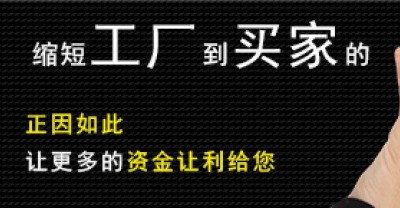
When winter comes, the old gardener will teach you to raise two kinds of flowers suitable for autumn and winter.
It is winter, flowers wither, plants wither, everywhere is a bleak scene. If you can raise a few flowers in this season, you can do it for.
- Next

"San Nong Qi Tan" A master of soft-shelled turtle farming teaches you how to raise wild soft-shelled turtle by open-air culture
His soft-shelled turtle is so fierce that he won't let go once he bites it. The ferocious soft-shelled turtle is not easy to catch, attracting many tourists to jump into the quagmire. Five years ago, how to sell soft-shelled turtle to him.
Related
- On the eggshell is a badge full of pride. British Poultry Egg Market and Consumer observation
- British study: 72% of Britons are willing to buy native eggs raised by insects
- Guidelines for friendly egg production revised the increase of space in chicken sheds can not be forced to change feathers and lay eggs.
- Risk of delay in customs clearance Australia suspends lobster exports to China
- Pig semen-the Vector of virus Transmission (4)
- Pig semen-the Vector of virus Transmission (3)
- Five common causes of difficult control of classical swine fever in clinic and their countermeasures
- Foot-and-mouth disease is the most effective way to prevent it!
- PED is the number one killer of piglets and has to be guarded against in autumn and winter.
- What is "yellow fat pig"? Have you ever heard the pig collector talk about "yellow fat pig"?

